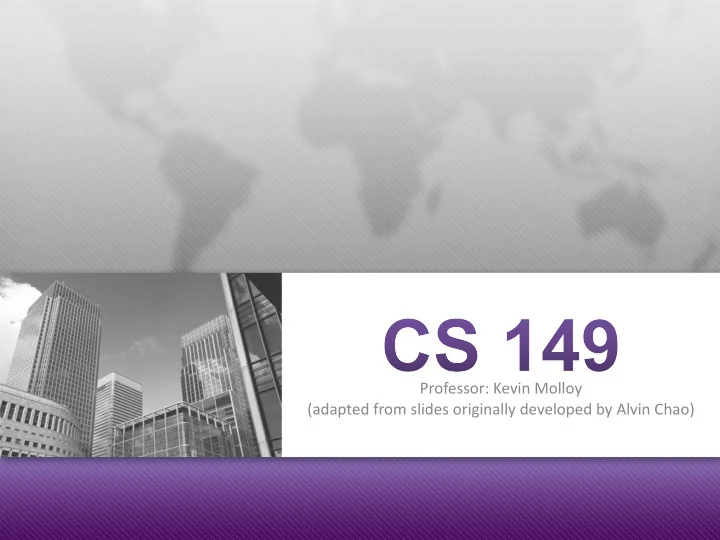

Professor: Kevin Molloy (adapted from slides originally developed by Alvin Chao)
• The primitive data type boolean has two values: true and false . Boolean expressions are built using relational operators and conditional operators . • An expression that evaluates to true or false Examples: • X < 7 • A == B • 3!=4
• Relational operators work as expected when comparing integers • Also possible to compare integers with floating point values 2 < 3.0 // true • Be careful with floats and doubles! (.1 + .1 + .1) == .3 // false!!!!! • Chars: 'a' < 'b' // true '0' < '1' // true 'Z' < 'a' // true, upper-case less than lower-case '9' < 'A' // true, numbers less than letters
• They don't work at all with strings: “HELLO” < “THERE” // Syntax error!!! “HELLO” == otherString // Won't work as expected!!! • To compare string you will use the method .equals(). If we have two strings a = “Hello” and b = “hello” the expression • a.equals(b) would yield false.
• Syntax: • Examples:
• What’s wrong with this code?
• Style guide / Checkstyle says use braces and proper indentation.
• These are all functionally equivalent, which is better?
Fill in the rest of the table, the first four lines are completed.
1. On line 5 for the first model: boolean isLarger = three > four – a) What three actions are performed in this single line of code? – b) Write two lines of code, ending with semicolons, that would perform these same actions (but in two lines instead of a single line). 2. List the four unique boolean expressions used in the model. 3. The!= operator means “not equals”. Give an example of a boolean expression that uses != and evaluates to false. 4. Explain why the same boolean expression three == four resulted with two different boolean values in this Model. 5. What is the difference between = and == in Java? 6. Here are the six relational operators that can be used in a boolean expression. ==, >, <, >=, <=, !=
1. What do these example expressions evaluate to (true or false)?
Give different examples of boolean expressions that: a) uses a, b, and !, and evaluates to false b) uses b, c, and !, and evaluates to true c) uses any variables, but evaluates to false d) uses any variables, but evaluates to true Using your answers from the previous question, write the boolean expression p && q where p is your first answer and q is your second answer. a) Your expression: b) Result of p && q:
• Acknowledgements Parts of this activity are based on materials developed by Chris Mayfield and Nathan Sprague. </end>
Recommend
More recommend